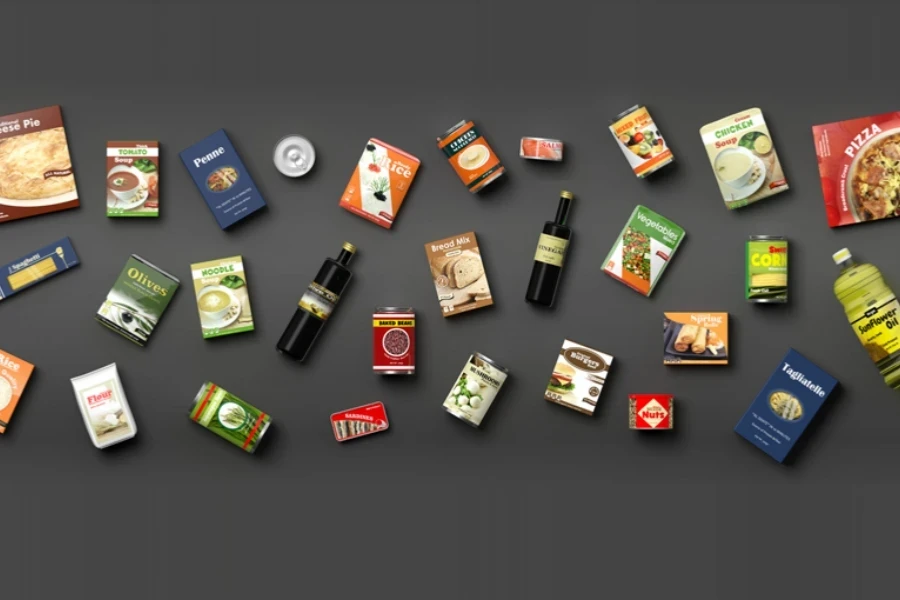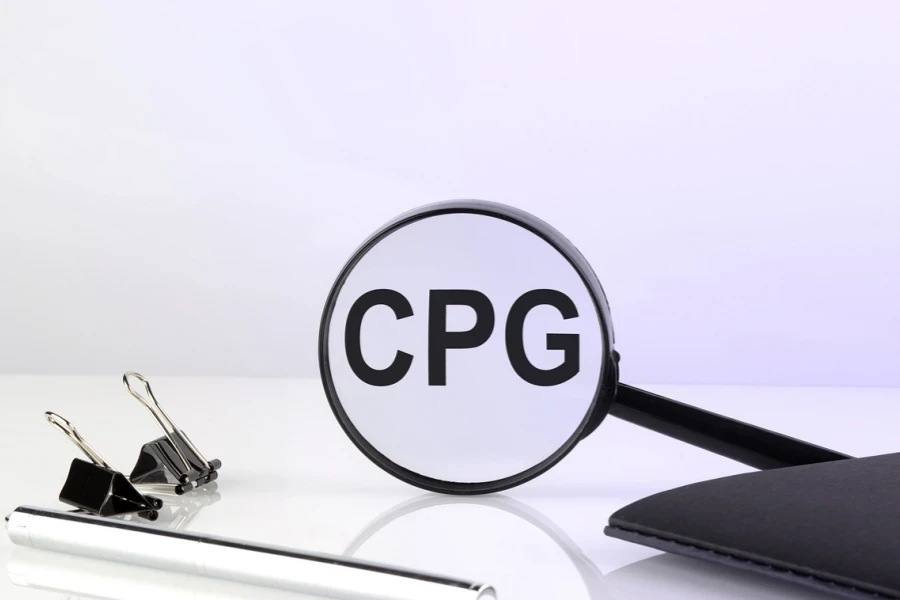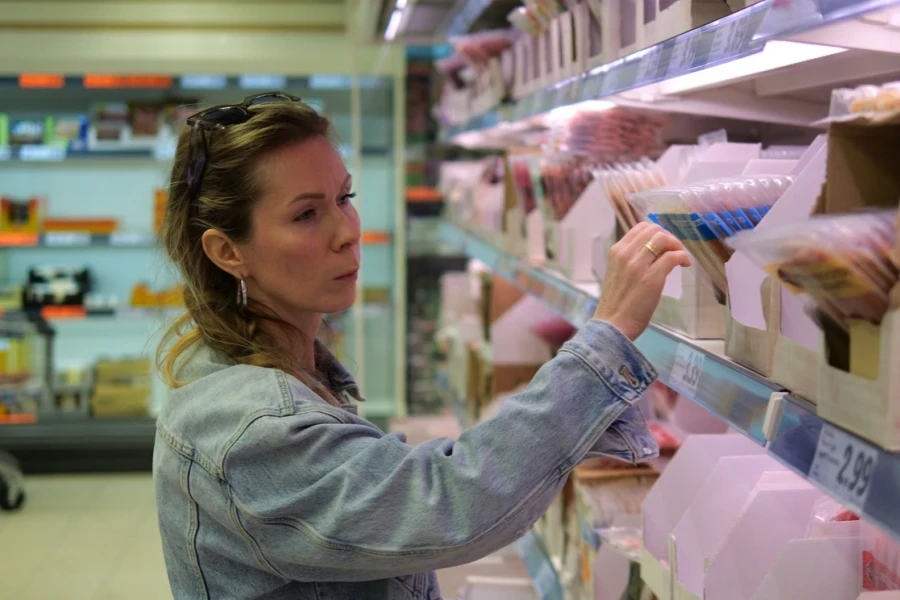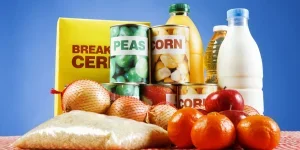Ever grabbed a bag of chips at checkout? Tossed some laundry detergent into your cart? Stocked up on toothpaste because it was on sale? Then you’ve bought consumer packaged goods (CPG).
CPG products are the everyday essentials people buy, use, and replace regularly. As you might expect, the industry is massive, competitive, and always changing. For this reason, anyone in the business of selling, manufacturing, or any way involved in products should know how CPG works, as it could give you a serious edge.
So, what exactly are CPGs, and what role do they play in the e-commerce economy? This article will explain everything.
Table of Contents
What are consumer packaged goods (CPG)?
4 types of consumer goods
1. Convenience goods
2. Shopping goods
3. Specialty goods
4. Unsought goods
CPG vs. FMCG: What’s the difference?
Why CPG matters for businesses
3 CPG trends to know
1. CPG growth
2. Market potential
3. CPG industry changes
Wrapping up
What are consumer packaged goods (CPG)?

CPG refers to products people use daily and replace often. They are mass-produced, sold in physical stores and online, and usually packaged in a way that allows them to be stored and transported easily.
For goods to classify as CPG, they’ll need a high turnover rate, consistent consumer demand, and everyday necessities. Some common categories include:
- Food and beverages (snacks, cereal, bottled drinks, frozen meals)
- Household items (detergents, toilet paper, cleaning supplies)
- Personal care products (shampoo, toothpaste, deodorant)
- Over-the-counter medicine (pain relievers, vitamins, allergy meds)
Unlike durable goods (cars or furniture, etc.), CPG items don’t last for years, and this rapid turnover makes the market extremely competitive. Therefore, brands focus on advertising, pricing strategies, consumer loyalty, packaging, and distribution networks to capture market share.
4 types of consumer goods

Not all consumer goods fit neatly into the CPG category. Consumer products fall into four main types based on how people buy them.
1. Convenience goods
These are the products people buy without thinking twice. They’re inexpensive, frequently used, and usually stocked in places that are easy to grab.
- Examples: Bread, batteries, toothpaste, bottled water
- Buying habit: Fast, low-effort purchases (often impulse buys)
- Price sensitivity: High – most people opt for the most convenient or cheapest option
CPGs mostly fall into this category. Consider how often consumers have grabbed a pack of gum or a soda while checking out.
2. Shopping goods
Unlike convenience goods, these require some decision-making. Consumers compare brands, prices, and features before purchasing.
- Examples: Clothing, laptops, home appliances, furniture
- Buying habit: Less frequent, researched purchases
- Price sensitivity: Moderate to high – people take their time choosing
These aren’t items people throw in their carts without a second thought. Instead, they take their time to shop around for the best option.
3. Specialty goods
These are products people seek out specifically for their brand or quality. They usually don’t hesitate because they know what they want and are willing to pay for it.
- Examples: Luxury watches, designer handbags, high-end electronics
- Buying habit: Infrequent but intentional
- Price sensitivity: Low – people are paying for the brand, not just the product
Someone buying an iPhone isn’t browsing cheap Android alternatives – they’re getting an iPhone, period.
4. Unsought goods
These aren’t on people’s radar until they need them. Unsought goods are the best contrast to convenience items, as many consumers don’t “enjoy” buying them.
- Examples: Life insurance, fire extinguishers, emergency medical products
- Buying habit: Reactive, need-based
- Price sensitivity: Depends on urgency
No one wakes up thinking, “I should buy a fire extinguisher today.” But in the event of a kitchen fire, it becomes the most important purchase you’ve ever made.
CPG vs. FMCG: What’s the difference?

Although similar, the key difference between consumer packaged goods (CPG) and fast-moving consumer goods (FMPG) is that the latter have even faster turnover rates, with consumers buying them daily or weekly.
In addition, CPGs tend to vary in price and packaging size, but FMCGs are cheaper since retailers sell them in higher volumes.
Note: Some FMCGs are also perishable, but not all. For example, milk is a fast-moving item, but so is soda.
Here’s a quick summary of the key differences:
| Feature | CPG | FMCG |
| Definition | Packaged goods consumers use frequently | Fast-selling packaged goods |
| Shelf life | It varies (could be short or long) | Usually short, but some products can last longer |
| Sales cycle | CPG sales can be steady or slow | However, FMCG has quick sales and constant restocking |
| Examples | Shampoo, canned food, and cosmetics | Bread, milk, eggs, toilet paper, and highly consumable items |
These distinctions matter for businesses because FMCG requires speed, efficiency, and rapid turnover, while other CPG items may sell steadily. In short, every FMCG is a CPG, but not every CPG is an FMCG.
Why CPGs matter for businesses

Understanding how the CPG industry works is a major advantage if you’re selling, manufacturing, or marketing consumer packaged goods. Here’s why:
- It’s a competitive space – CPG brands fight for shelf space and customer loyalty
- Consumer habits are always changing, so staying ahead keeps the business profitable
- Margins can be tight – the right pricing and marketing strategies make all the difference
- The right branding can make or break a product, especially in categories where buyers have a lot of choice
Knowledge of CPGs is necessary no matter if your launching a new product, running a retail store, or navigating consumer buying trends.
3 CPG trends to know

With an impressive USD 2 trillion market value, the North American CPG industry features several growth-boosting trends and looks to shift over the next few years due to changes in population makeup and changing consumer preferences. Here are three trends to note:
1. CPG growth
By 2032, research forecasts up to USD 3.8 trillion will be spent on everyday consumer goods annually. This growth is the result of a few factors:
- Higher incomes: People in developing countries are making more money, so they’re also spending more on popular brands
- Bigger population: A growing global population means more shoppers will buy these products
- Changing preferences: Consumers are looking for more healthy, eco-friendly, and personalized products than before
2. Market potential
Here are three factors that will influence this sector’s market growth:
- Expanding into new countries: Fast-growing regions like China, India, and Southeast Asia offer huge potential because of their large populations and increasing CPG demand
- Online shopping: Online shopping is bigger than ever, so people also buy their CPGs online. The best part is that brands can now sell directly to them and offer personalized shopping experiences.
- New technology: The CPG industry will benefit from AI and data analytics tools, which help businesses upgrade their supply chains and create more targeted marketing strategies
3. CPG industry changes
The CPG industry has made noticeable shifts in recent years. Here are some key changes:
- Health and wellness: As more people demand healthier food and personal care products, stores are stocking more items to meet demand
Health care products: The market for everyday health essentials like pain relievers, cold medicine, home remedies, and vitamins is growing as people focus more on wellness
- Sustainability: This trend is still huge, as consumers want products with sustainable production and eco-friendly packaging
- Store-brand products: Retailers are creating their brands, offering quality products at lower prices to compete with big-name brands
Wrapping up
Consumer packaged goods are everywhere and include everything from groceries to soap. They’re the backbone of retail, and understanding them helps businesses thrive. Finally, to succeed, it’s best to remember these key points before diving into the industry:
- CPG is a broad category of products, while FMCG is its fast-moving segment
- Products fall into different categories based on how people buy them
- Knowing how consumers shop helps businesses sell smarter





 Afrikaans
Afrikaans አማርኛ
አማርኛ العربية
العربية বাংলা
বাংলা Nederlands
Nederlands English
English Français
Français Deutsch
Deutsch हिन्दी
हिन्दी Bahasa Indonesia
Bahasa Indonesia Italiano
Italiano 日本語
日本語 한국어
한국어 Bahasa Melayu
Bahasa Melayu മലയാളം
മലയാളം پښتو
پښتو فارسی
فارسی Polski
Polski Português
Português Русский
Русский Español
Español Kiswahili
Kiswahili ไทย
ไทย Türkçe
Türkçe اردو
اردو Tiếng Việt
Tiếng Việt isiXhosa
isiXhosa Zulu
Zulu